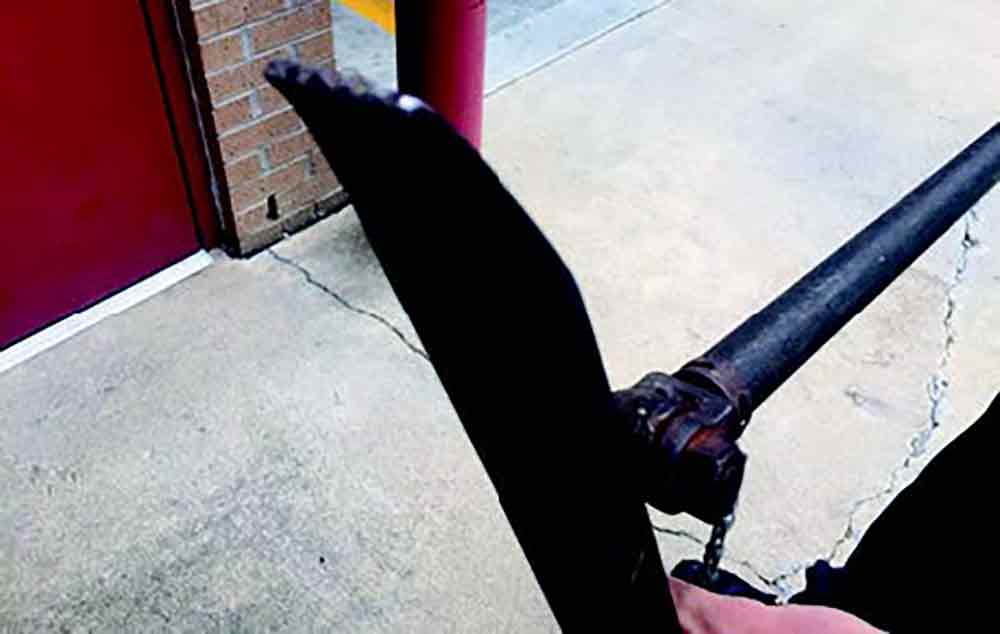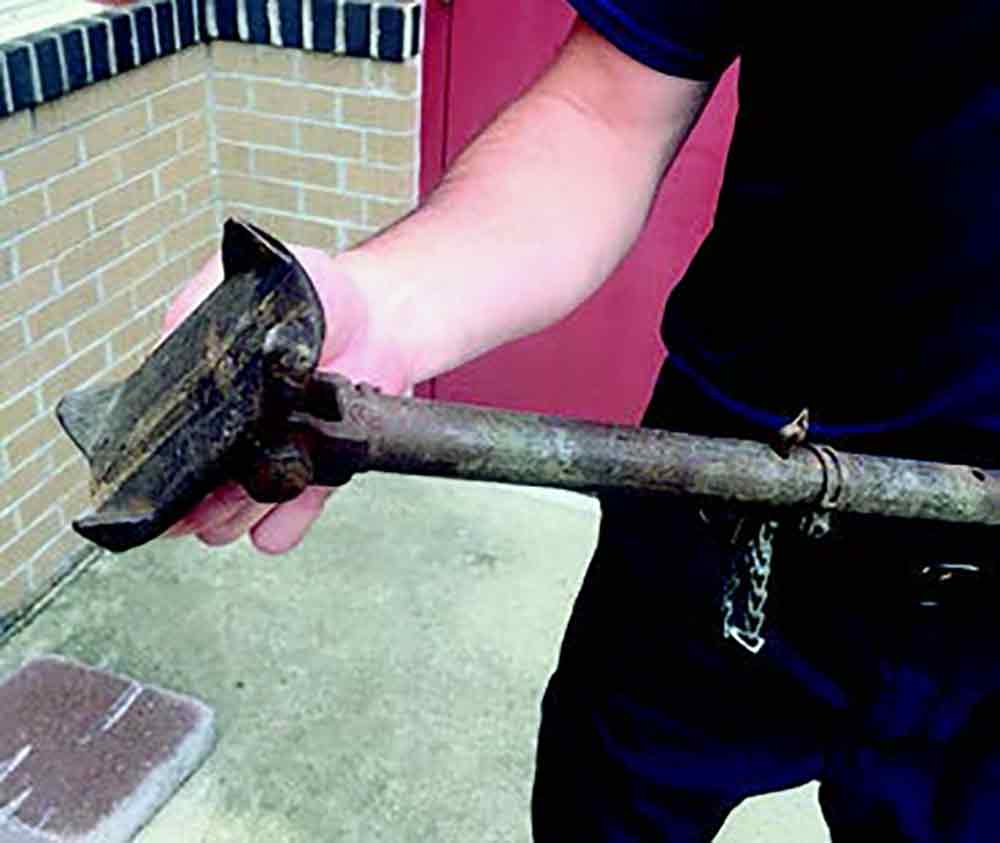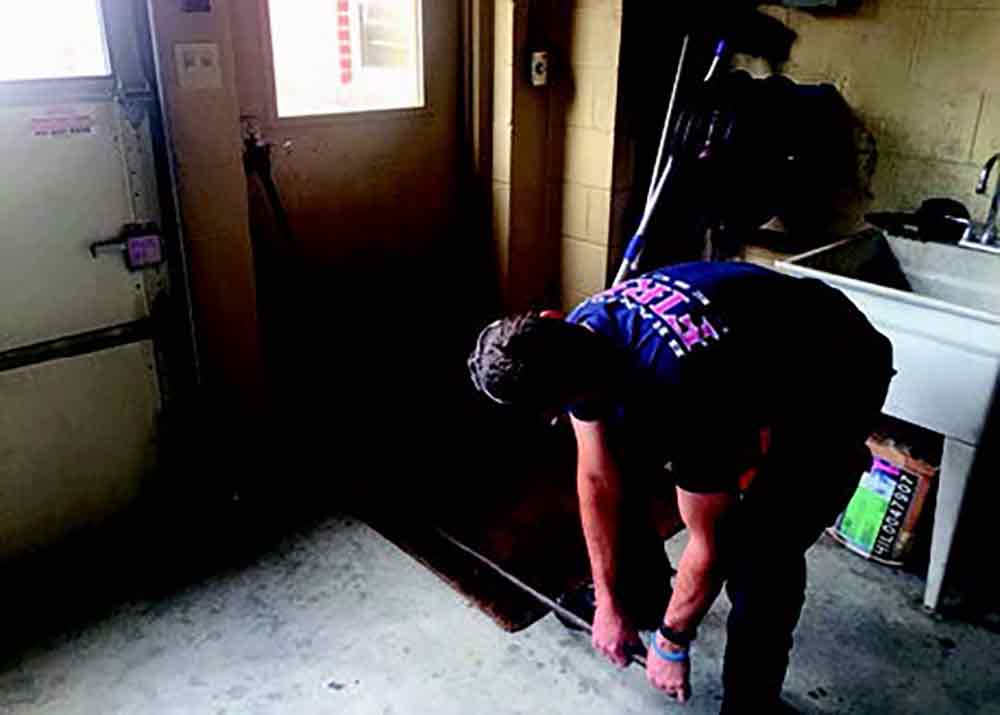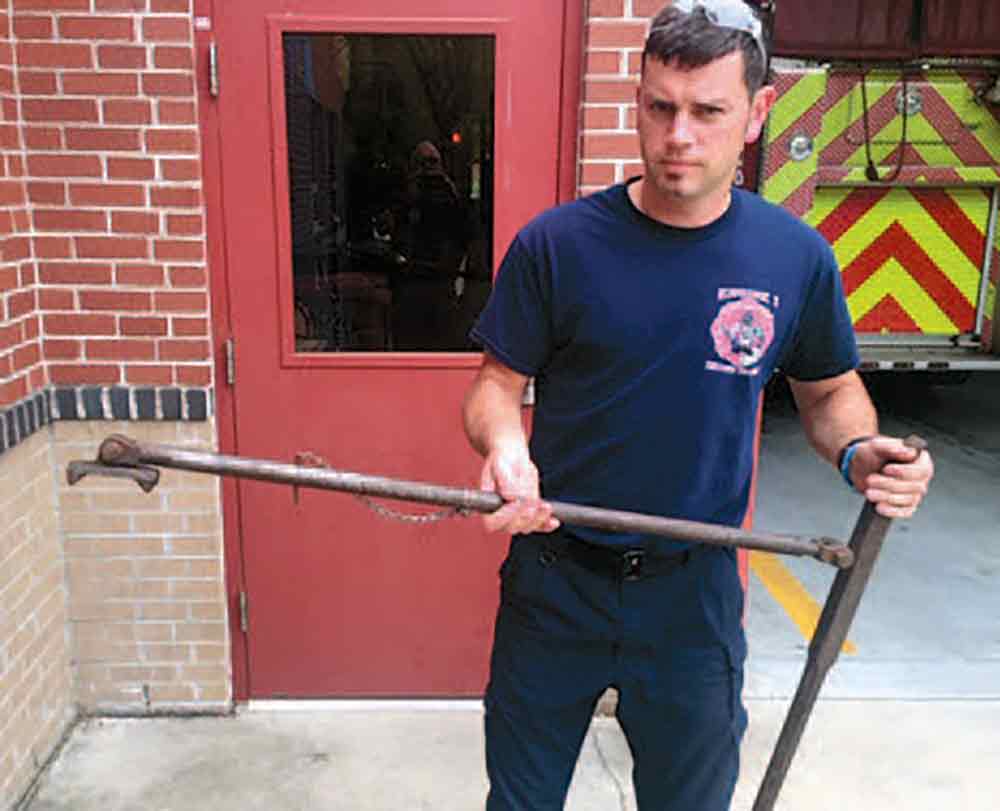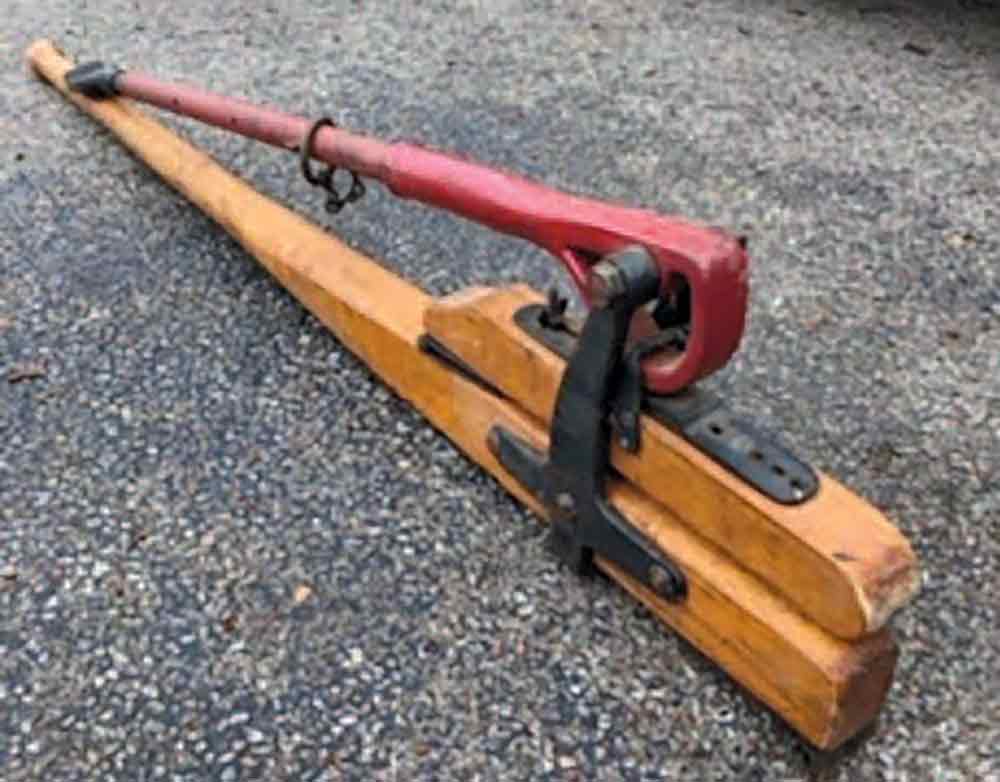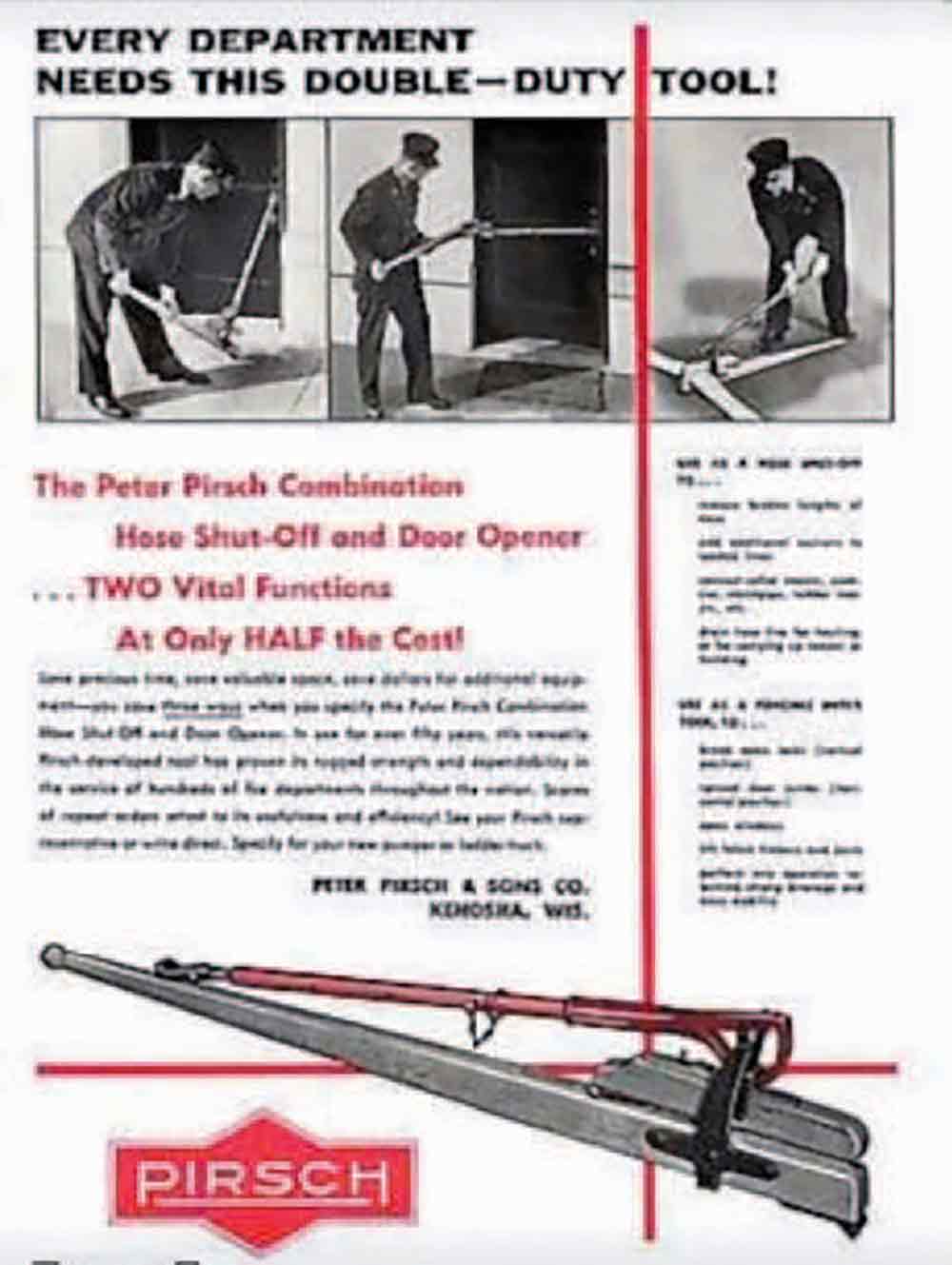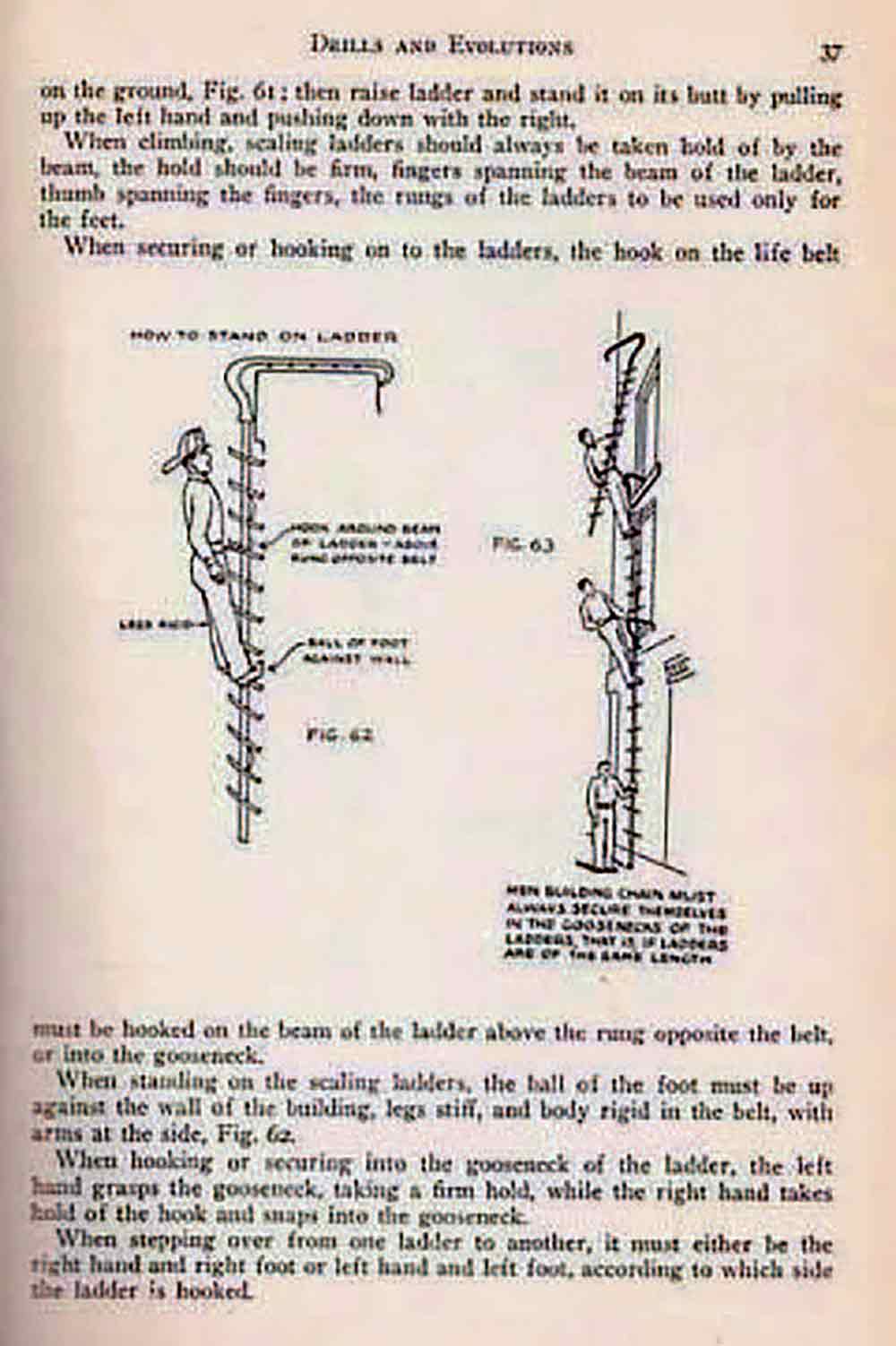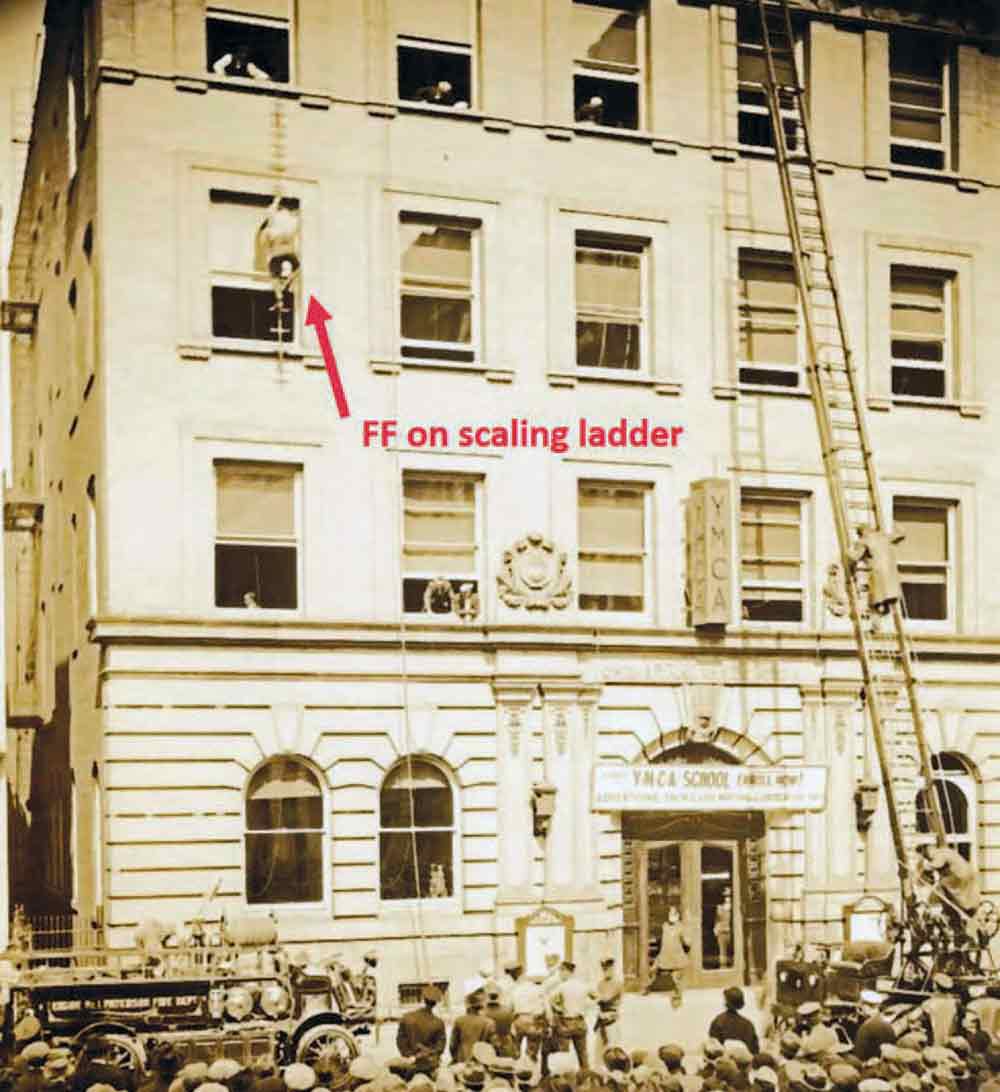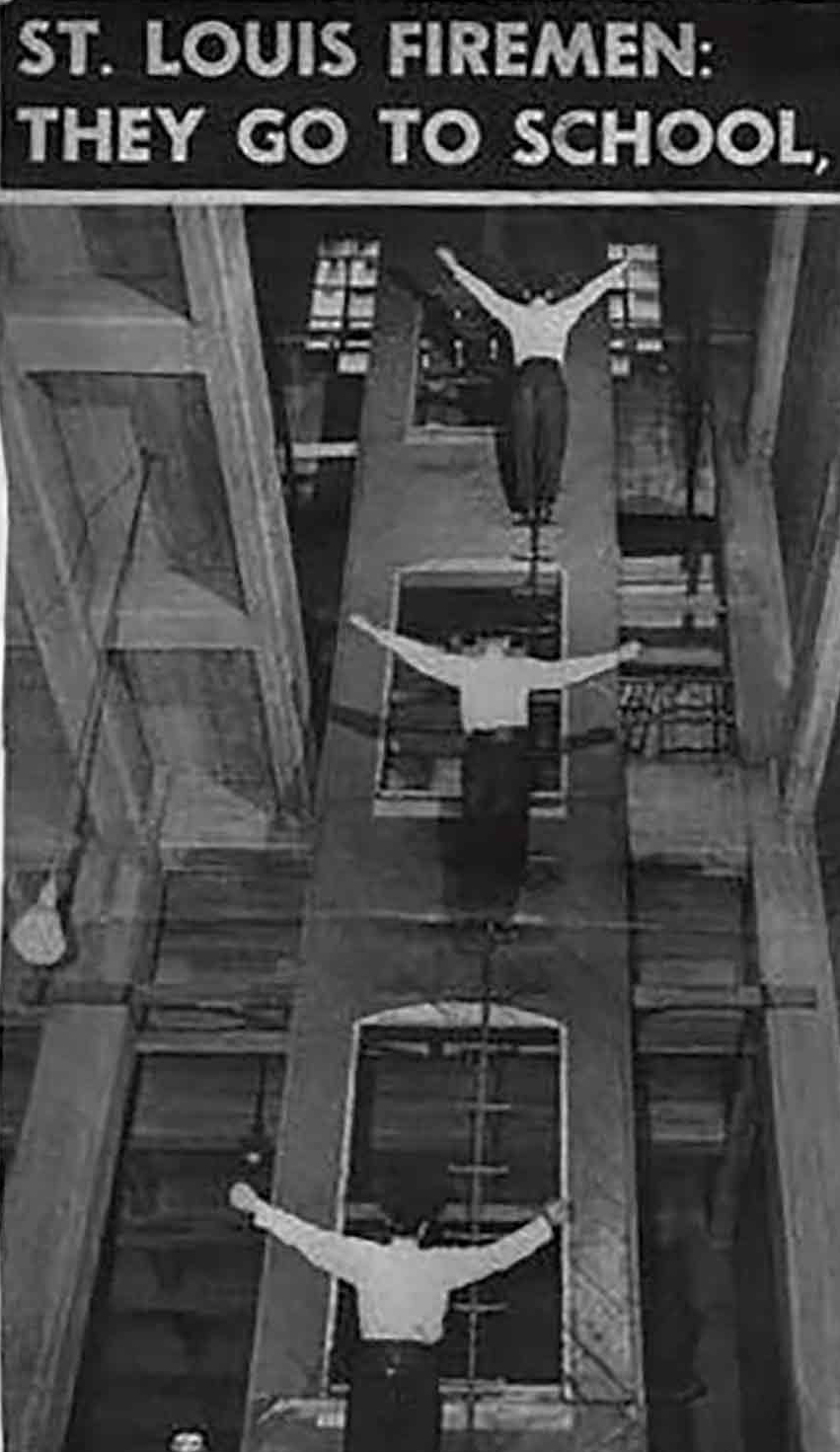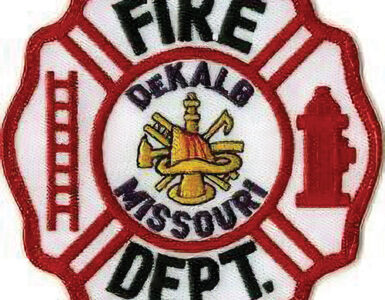I rely completely on my next-door neighbor to help me keep track of all the tools and equipment for firefighters that have passed into the history category. The reason for that is because every couple of weeks he appears at my front door or texts me a picture of something new that he has added to his collection of fire service memorabilia.
A couple of month’s ago he came over with huge box that UPS had delivered to his house. I don’t think he had even opened it until he got to my front porch. Inside was a dark blue wool almost full-length coat with a very high collar. When I inquired why he wanted an old Navy Peacoat, he was not impressed and preceded to tell me that it was antique British firefighting coat from the 1940’s and that it was a real find! That “real find” was added to the hundreds of items he has displayed on the entire ground floor of his home.
Chris Ely is my neighbor and an outstanding member of the Branson Fire Department. I’m fairly sure he likes me because we have many common interests in the fire service. It might also be because I mow his grass every time I mow mine. I’m also sure that his wife Brandi is a candidate for sainthood because she allows this collection fetish.
My latest experience came just a week or two ago when he texted me and ask if I knew what a “Detroit Door Opener” was and if I had ever seen one. Before I even had time to respond he shows up in my front room with his latest shipment.
After a short visit about the tool and many other interesting inventions, normally designed and invented by firefighters for special application, we decided they would make an interesting article.

THE DETROIT DOOR OPENER
At first glance, the tool appears to be two giant pry bars attached to one another. The top bar in the picture is actually close to a pry bar and the foot is cut at an angle with serrated teeth, which allows the base to imbed into the floor when it is used.
Bottom prying portion of tool
The portion of the tool that contacts the door can be adjusted in length by pulling the pin that can be seen in the top picture above. The end of that portion has a foot that contacts the door or door lock, shown in the pictures.
The compression foot that contacts the door
The length of the rod from the fulcrum to the compression foot may be adjusted by removing the pin, which is employed for locking the extension and drawing the extension out to the desired point, and then replacing the pin.
The editor extends his thanks to the Station Two crew for their assistance and hospitality, a dozen Krispy Cream donuts will buy you a lot of love!
And there will always be someone to come up with a “better mousetrap.” Check out this ad from Peter Persch Fire Apparatus. They combined the need for a door opener and a hose clamp in one tool.
THE POMPIER OR SCALING LADDER
This is one tool that I gained a fascination with and a healthy respect for when I was in the School of Fire Protection at Oklahoma State University in the early 1970’s. Most of the students in the program then lived in the Campus Fire Station. As part of the station, there was a large fire sprinkler lab and a five-story drill tower.
One of my idols at the time was a salty white haired Assistant Fire Chief by the name of W.C. Buck. Chief Buck was also an instructor in the School of Fire Protection and taught a college class on fire department ladders.
Buck also wore another hat as a captain in a local Engineering Battalion of the Oklahoma National Guard. He had started Oklahoma A and M as a student in 1939, the first year the fire program started, but his college career was interrupted by World War II.
Story has it that when he left for duty his hair was coal black and after he return from being a tank commander in the entire European Theater, his hair was white when he got home. Needless to say, this guy had no fear and wanted to make sure we didn’t have any either.
One exercise we did was to climb to the top of a fifty-foot banger ladder raised in a church raise, go over the top rung and back down the other side of the ladder. Of course, one of the other drills we did was to scale the entire five-story tower with a Pompier ladder, not once, lots of times.
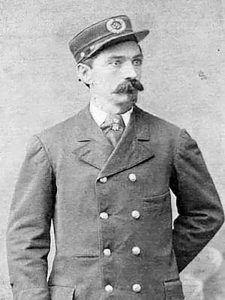
Lieutenant Christ Hoell
St. Louis Fire Department
Lt. Christ Hoell of the St. Louis Fire Department introduced the Pompier Ladder to the American Fire Service in 1877. He learned the tool and methods of it use while on the Fire Department in Elberfeld, Germany. In 1873 at the age of 27, he immigrated to the US and worked as a stonemason until his appointment to the St Louis Fire Department. After two serious fires in 1877, Hoell suggested a “Pompier Corps” be developed within the department for major rescue activities.
He was later given a leave to travel to New York City to train their department. FDNY’s first rescue with a pompier ladder occurred on April 7, 1884, performed by John Binns of Ladder Company 3 and the last on December 15, 1967 by Gene Dowling of Ladder Company 25, making a daring rescue in 30 MPH winds. Both the first and last rescues performed with the Pompier Ladder earned the James Gordon Bennet Medal, the highest honor bestowed to fdny firefighters.
Many people owe their lives to this odd ladder and the daring firefighters who scaled the sides of buildings to save fire victims! The FDNY carried the Pompier Ladder on their rigs until July 11, 1996, when it was decommissioned. The Boston Fire Department and other major cities around the country continue to use the ladder as part of their recruit training.
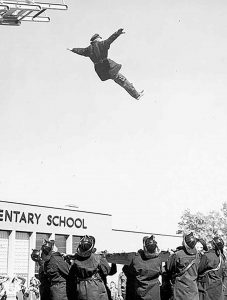
THE BROWDER LIFE NET
The huge round life net held by several firefighters was for a number of years carried on truck companies as standard equipment. The Browder life net was invented and introduced to the fire service August 19, 1902. One of the last recorded uses for life safety was by the Los Angeles Fire Department in February 1964, during an apartment house fire.
Ladder 38 of the Stillwater Fire Department had one that we used in training several times when I was in school. In fact, Chef Buck amused us by doing a somersault out of the fifth floor and into a life net being held by ten or so 20 year old students. Not real bright, I must admit, but fun at the time.
There are hundreds of other unique tools that have been designed by firefighters and companies over the years that have been replaced by more modern hydraulic and mechanical tools that are more practical.
By the way, Chris Ely does not have a Pompier Ladder in his collection but would drive half way across the entire country to get one.



